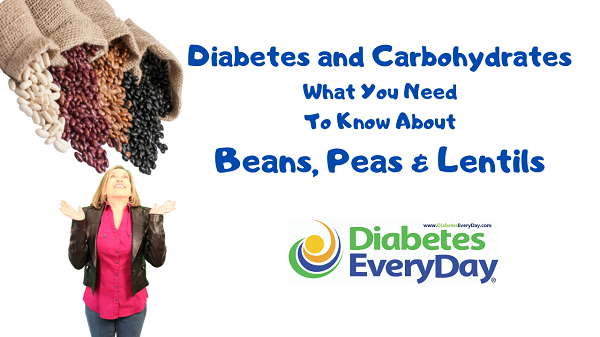Diabetes and Carbohydrates- What You Need To Know About Beans, Peas, and Lentils
Estimated reading time: 3 minutes
This is the next video in my series about the different groups of carbohydrate foods. And this week, we celebrate heart health and soluble fiber with beans, peas, and lentils.
Table of contents
Be Sure To Check Out - What You Need To Know About Carbohydrates – Grains (one of our latest ones from this series)
Let's Continue With Beans, Peas, and Lentils
I’m continuing the series on what you need to know about carbohydrates and discussing the various carbohydrates in these large food groups. For those of you following a plant-based or whole foods eating plan, you will love this video. Today, I’ll tell you about some amazing health benefits you can get by eating these plant-based powerhouse foods. I’m talking about Beans, Peas, and Lentils.
Serving Sizes
To start, here are the serving sizes for 15 grams of carb or 1 carb choice:
Beans, cooked (black, garbanzo, kidney, white, lima, navy, or pinto or refried canned beans) 1/3 cup
Lentils, cooked (brown, green, or yellow) 1/3 cup cooked
And Peas, cooked (black-eyed or split peas) 1/3 cup cooked
So, a one-third cup serving of any beans, peas, or lentils is a serving but also remember that you can double or triple the serving depending on how many carbs you eat at mealtimes. And…you will want to include legumes in your eating plan because they also are packed with a source of plant-based protein and fiber. Legumes are defined as plants that produce pods that have seeds inside, and beans, peas, and lentils are examples of legumes.
Beans With Benefits
You may have heard me say that high-fiber foods are good for diabetes management. I like to refer to beans as beans with benefits. Beans have a type of fiber called soluble fiber which not only helps delay spikes in blood sugar but also helps lower LDL (the bad) cholesterol. There is a study that used people with type 2 diabetes who ate a cup of beans or lentils every day as part of a low glycemic diet, and after 3 months, their A1C reduced by half a percentage point.
Be Sure To Check Out - One Simple Step To Naturally Lower Your A1C
There is also research that found dry beans and legumes can have a lower glycemic response after eating the second meal, so you get twice the benefit from eating beans once per day.
How To Add Beans, Lentils, And Peas To Your Diet
Here are some ideas on how to include beans, lentils, or peas into your diet:
- Add legumes to soup or salads. A favorite dish we make at our house is our own taco salad by using tortilla chips, topped with beans, shredded cheese, green chili peppers and then we microwave until the cheese is melted. Then we serve a large salad on the side topped with fresh salsa.
- You can also use beans for your veggie burgers. Check out my recipe for black bean burgers or make a lentil loaf.
- Canned beans offer a quick meal but be careful of the sodium content. Purchase no added salt versions or rinse the beans before cooking.
Let me know in the comment section below, what are your favorite ways to eat legumes.
Be watching in a couple of weeks as I discuss the final group of carbohydrate food – fruit.
Until next time, cheers to your health.
Don't forget to take a look at our most frequently asked questions.
You May Also Enjoy
